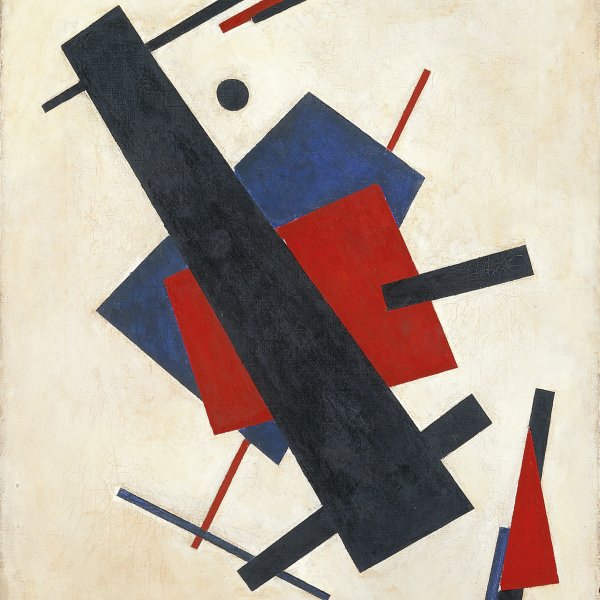Nikolai Suetin
Miatlevskaia, 1897-Saint Petersburg, 1954
An artist affiliated with Russian Suprematism, Suetin not only applied Kazimir Malevich’s artistic theories to painting but was also interested in putting them into practice in everyday life. From 1918 to 1922 he studied at the Vitebsk Art School run by Marc Chagall, where he met Malevich. Even during this formative period Suetin, together with Ilya Chashnik, became one of Malevich’s closest collaborators and a faithful champion of Suprematism, contributing to its dissemination through publications, by organizing exhibitions, and by establishing the Unovis (Affirmers of the New Art) group.
In 1922 Suetin and other followers accompanied Malevich to Petrograd (now Saint Petersburg) after he was removed from his post at the Vitebsk school. There he began to work at the Institute of Artistic Culture (Inkhuk) where, among other activities, he collaborated with Malevich on Suprematist architectural designs for buildings that were never constructed. This facet was complemented by his work as an exhibition designer, exemplified by the Soviet Union’s pavilion at the Paris Exposition Internationale of 1937. In parallel with these activities, he began to create designs for the ware produced at the Lomonossov state porcelain factory, of which he was made artistic director in 1932.
Suetin survived his friend Chashnik and his master Malevich.When Malevich died in 1935, Suetin decorated his coffin with Suprematist motifs and organised his funeral, which became the last expression of the style that both had espoused. In the 1930s he concentrated more on the applied arts and avoided explicit references to Suprematism, which the Soviet Government apparatus regarded as an undesirable style of art.
In 1922 Suetin and other followers accompanied Malevich to Petrograd (now Saint Petersburg) after he was removed from his post at the Vitebsk school. There he began to work at the Institute of Artistic Culture (Inkhuk) where, among other activities, he collaborated with Malevich on Suprematist architectural designs for buildings that were never constructed. This facet was complemented by his work as an exhibition designer, exemplified by the Soviet Union’s pavilion at the Paris Exposition Internationale of 1937. In parallel with these activities, he began to create designs for the ware produced at the Lomonossov state porcelain factory, of which he was made artistic director in 1932.
Suetin survived his friend Chashnik and his master Malevich.When Malevich died in 1935, Suetin decorated his coffin with Suprematist motifs and organised his funeral, which became the last expression of the style that both had espoused. In the 1930s he concentrated more on the applied arts and avoided explicit references to Suprematism, which the Soviet Government apparatus regarded as an undesirable style of art.





